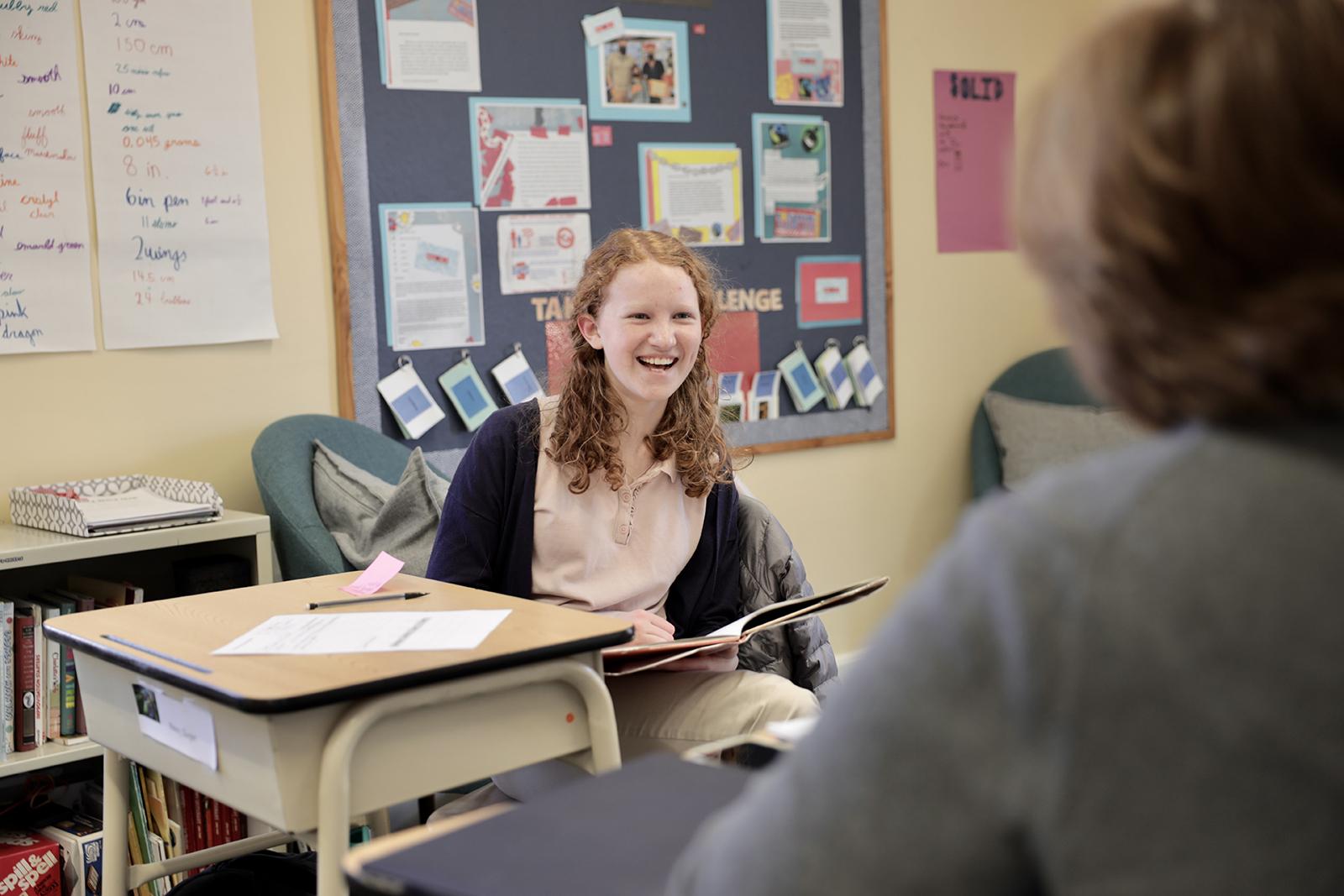- Our School
- Our Advantage
- Admission
- Elementary•Middle School
- High School
- Summer
- Giving
- Parent Resources
- For Educators
- Alumni
« Back
Helping Students Identify Media Bias
September 24th, 2024
Originally published February 2022, updated September 2024
How Parents Can Help Students Detect Media Bias
In an information-saturated world filled with bias, fake news, misinformation, and disinformation, it is crucial to recognize, utilize, and promote quality material. Just as important is teaching those skills to students. They need to be taught how to decipher media bias and become critical analyzers of information. According to the Merriam-Webster Dictionary, bias is defined as “a tendency to believe that some people, ideas, etc., are better than others; misinformation is false or inaccurate information mistakenly spread; and disinformation is false information that is deliberately created and spread.”
Knowing the source or author and the intent of the information is important in recognizing its purpose. What does the information make you think? Feel? Act? The rise of Artificial Intelligence (AI), has called attention to this need for caution. Some malicious AI users are exploiting unsuspecting users in a variety of scams using deep fake photos, videos, and voices, as well as, phishing emails. Cybercriminals use “urgency” as a way to gain access to your private information. How do you know if the call or email you just received is real? Check the source!
Media Bias Charts
News and information reliability runs on an XY continuum, existing with factors such as factual reporting and political bias. Using the chart below as a reference point, information found from sources closest to the top and in the middle is the most “reliable” sources, while others found on the left and the right and closer to the bottom have an increase in their ‘bias’ or perspective.
There are many news bias charts available and all can be considered “biased” because of who and how their sources are ranked. One of the most crucial and important steps to detecting bias is to consider the source. Keep this chart in mind the next time information comes your way.
Media Bias Chart from Ad Fontes Media. Landmark does not promote this particular chart.
Process Before Sharing
Both receptive (listening/reading) and expressive (speaking/writing) language skills are used when processing and sharing information. This requires the user to read and process information before they can share it with others, often in a very short period of time. If individuals are not able to process what they read or decipher the purpose of the information, how are they then able to know if that information should be shared with others?
Steps to Take
There are steps that should be taught to students to stop the cycle of misinformation and red flags to alert them (and you!) to fake news, misinformation, or disinformation.
1. Talk about “news” that is found on media sites. Who is reporting it? Is it simply a retweet/repost of a previous message? What/who is the message promoting?
2. Encourage students/people to stop and think, especially before sharing information. This is especially true of “breaking news.” Do not share what was read with others unless you have checked the information yourself. How does it make you feel? Typically, emotionally charged topics are used as “clickbait” and include very little accurate information.
3. Review best practices on how to check the authenticity of a source. Who is reporting the information? Can you find the same information on several sites? Is it a reputable news agency or your friend’s Instagram account? This may require you to search several sources before arriving at the facts.
4. Have students evaluate what they read. What is the purpose of the information? Is it meant to inform? Persuade? Who is the intended audience?
Social media sites are typically not known as reliable media outlets. Therefore, be aware of red flags that appear in the headlines or body of the post:
- emotionally charged topics (politics, religion, race, gender norms, science)
- excessive (or ill-used?!?) punctuation!!!!
- errors (in spelling and facts)
- bold or outrageous claims that promise quick fixes/the easy way out
Always rely on trusted media and news sites for information. Steer away from social media as a credible source to get your news, and look at sources like 1440, which tout “All your news. None of the bias.”
For more tips, advice, and best practices, check out Berkley’s Common Sense Media, the News Literacy Project, and the University of California’s Berkeley Library Fact Checker page. You can also subscribe to the weekly newsletter The Daily Scam which provides examples of scams and ways to protect yourself. The August 2024 news media bias chart 12.0 can be found on Ad Fontes Media.

Author
Amy is the librarian at Landmark’s High School campus. She began her career at Landmark in 1996, teaching Literature and Study Skills, one-on-one Language Arts Tutorials, and held the Assistant to the Department Head position in the Reading Department. Amy holds a Bachelor of Arts degree in English Education from Gordon College, a Master’s Degree in Special Education from Simmons College, and a Master's in Education in Library Media Studies from Salem State University. She is passionate about research and loves helping students explore their love of reading.
Posted in the category Learning.








.jpg?v=1652115432307)












